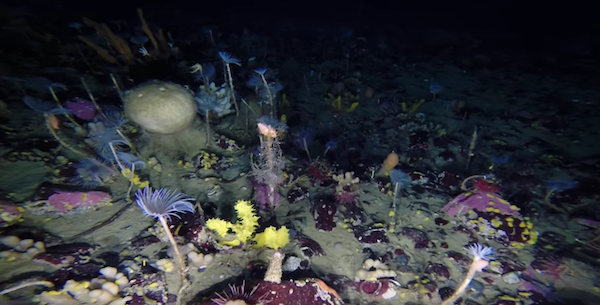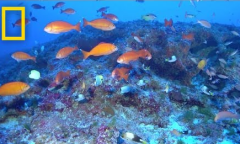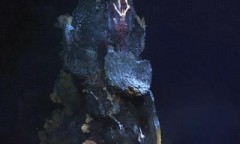By Vishal Goel, | December 26, 2016

Scientists drilled holes in the sea ice to lower a ROV into the water to capture a footage of the underwater life. (YouTube)
An underwater robot deployed by Australian Antarctic Division scientists has captured a rare glimpse into the Antarctic underwater world, showing the life forms beneath the east continent sea ice. The footage of the underwater sea shows a thriving, colorful world filled with dandelion-like worms, spidery starfish, pink encrusting algae, and coconut-shaped sponges among others.
Like Us on Facebook
The camera, which recorded the footage, was attached to a Remotely Operated Vehicle (ROV) deployed by scientists under the sea ice at O'Brien Bay, near Casey research station in East Antarctica.
Australian Antarctic Division Biologist, Dr Glenn Johnstone, said that iconic species such as penguins, seals, and whales usually steal the show when one thinks of the Antarctic coastal marine environment, but this footage reveals a productive, colourful, and dynamic habitat that is full of a wide variety of biodiversity, including sponges, sea spiders, urchins, sea cucumbers, and sea stars.
Australian Antarctic Division Ph.D. student James Black said the ROV was deployed through a small hole drilled in the sea ice. The temperature of the region is -1.5 degree Celsius all round the year with the water covered with 1.5 metre thick sea ice for ten months of the year. Dr. Johnstone said that an iceberg may occasionally move around and wipe out a community, but the sea ice provides protection from the storms that rage above resulting in a relatively stable environment and a flourishing biodiversity.
The Australian Antarctic Program project aims to determine the impact of ocean acidification on Southern Ocean sea-floor communities due to increasing carbon dioxide emissions. According to the project leader, Dr Johnny Stark of the Australian Antarctic Division, a quarter of the carbon dioxide emitted into the atmosphere is absorbed by the ocean increasing its acidity. Also, carbon dioxide is more soluble in cold water. According to Dr. Stark, polar waters are acidifying at twice the rate of tropical or temperate regions.
Research has shown that the effects of the acidification of Antarctic oceans may mean decreasing extent of the pink encrusting algae, known as crustose coralline algae because it incorporates calcium into its structure.
Scientists will further study the effect of ocean acidification on these communities in laboratories at the Division's headquarters in Tasmania.
-
Use of Coronavirus Pandemic Drones Raises Privacy Concerns: Drones Spread Fear, Local Officials Say

-
Coronavirus Hampers The Delivery Of Lockheed Martin F-35 Stealth Fighters For 2020

-
Instagram Speeds Up Plans to Add Account Memorialization Feature Due to COVID-19 Deaths

-
NASA: Perseverance Plans to Bring 'Mars Rock' to Earth in 2031

-
600 Dead And 3,000 In The Hospital as Iranians Believed Drinking High-Concentrations of Alcohol Can Cure The Coronavirus

-
600 Dead And 3,000 In The Hospital as Iranians Believed Drinking High-Concentrations of Alcohol Can Cure The Coronavirus

-
COVID-19: Doctors, Nurses Use Virtual Reality to Learn New Skills in Treating Coronavirus Patients











